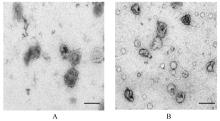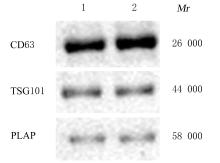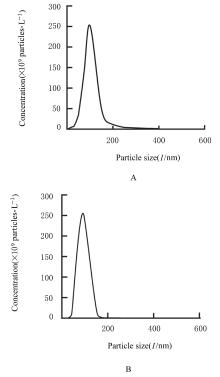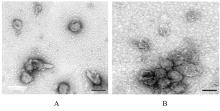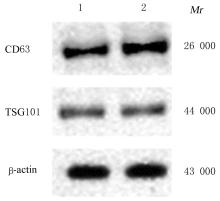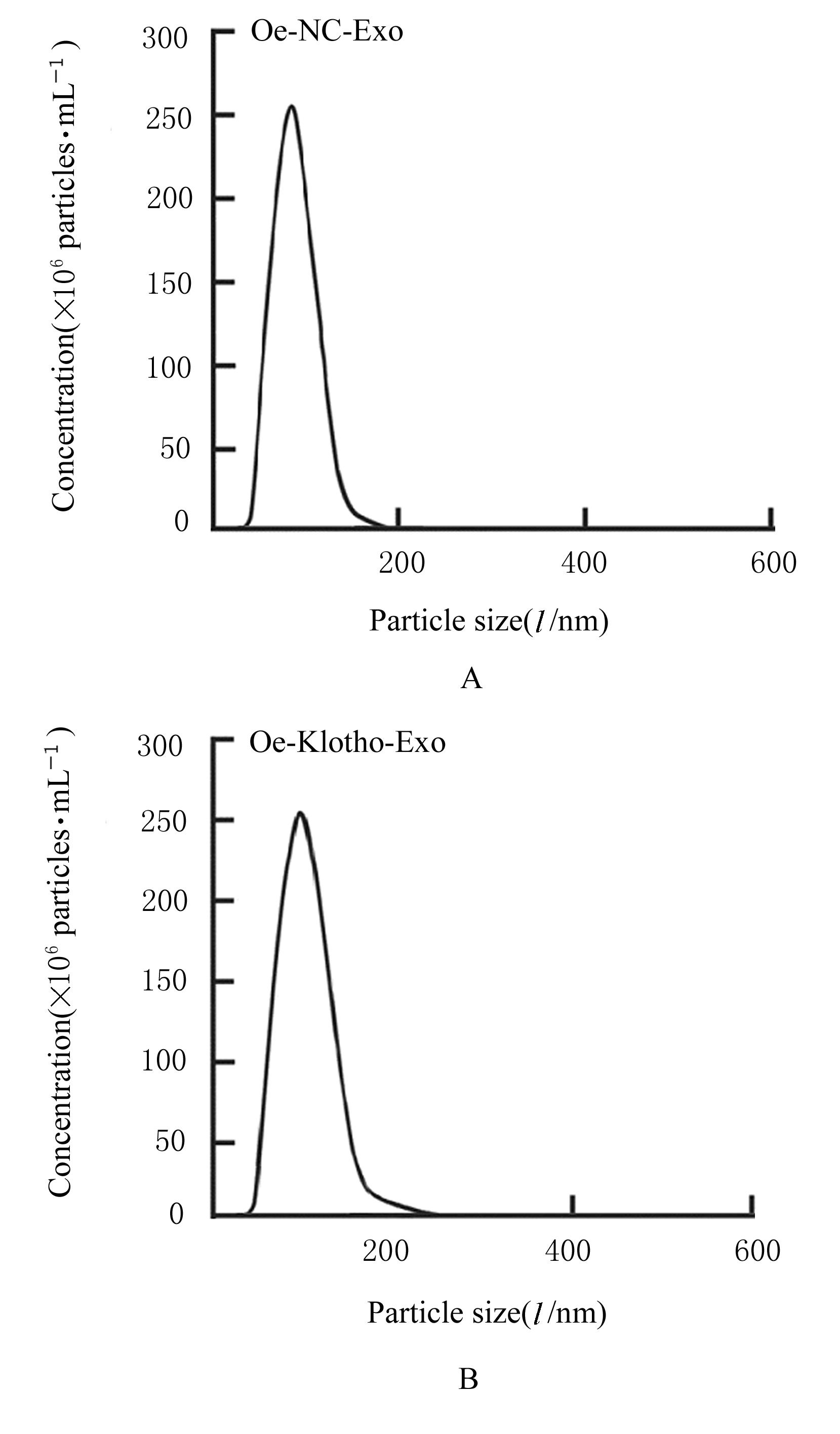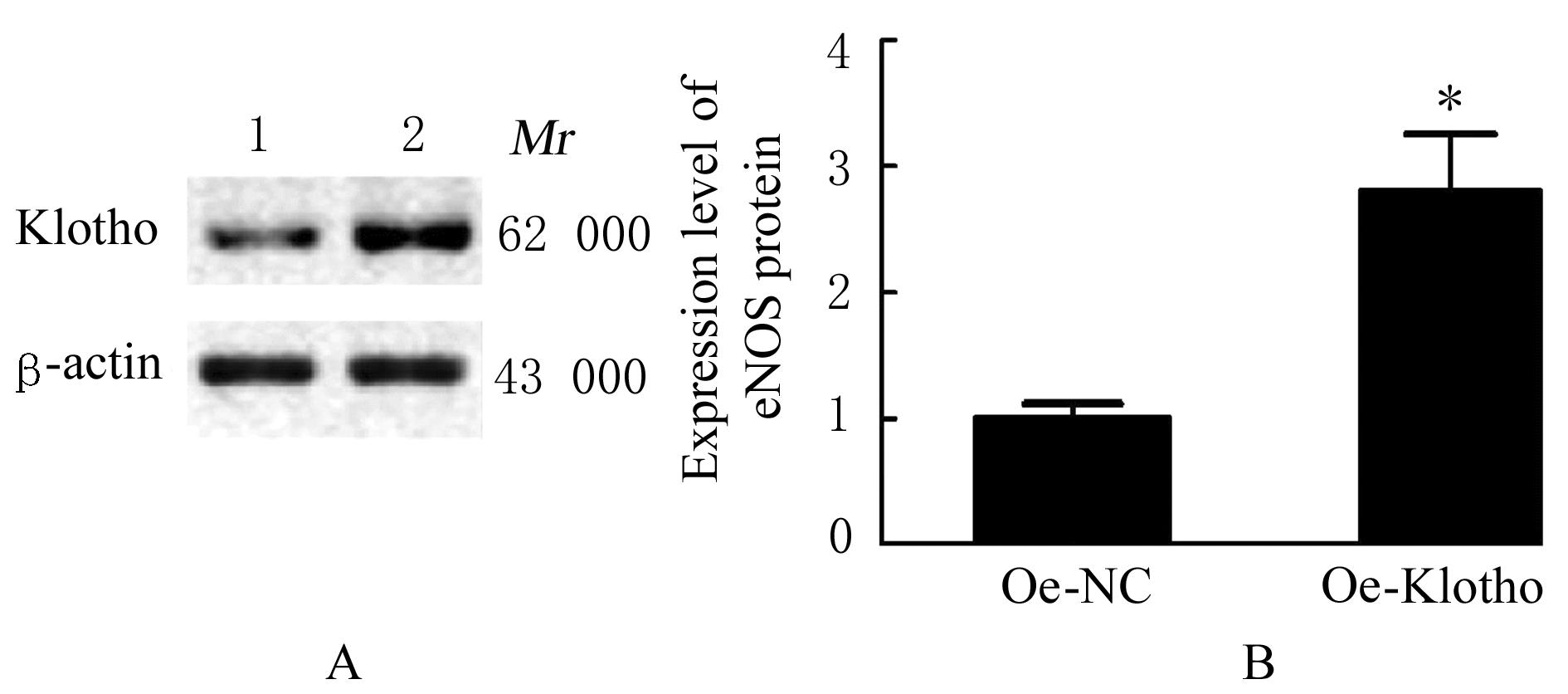吉林大学学报(医学版) ›› 2023, Vol. 49 ›› Issue (6): 1528-1538.doi: 10.13481/j.1671-587X.20230616
Klotho蛋白在子痫前期患者胎盘外泌体中表达及其对血管内皮细胞氧化应激的影响
- 新疆医科大学第五附属医院产科,新疆 乌鲁木齐 830011
Expression of Klotho protein in placenta exosomes in patients with pre-eclampsia and its effect on oxidative stress in vascular endothelial cells
- Department of Obstetrics,Fifth Affiliated Hospital,Xinjiang Medical University,Urumqi 830011,China
摘要:
目的 探讨Klotho在子痫前期(PE)患者来源的胎盘外泌体(Exo)中的表达,阐明其对血管内皮细胞氧化应激的影响。 方法 收集40例孕产妇的临床资料,其中正常妊娠(NP)者20名,PE患者20例,设为NP组和PE组,分离2组研究对象外周血中胎盘Exo。将oe-Klotho和oe-NC质粒转染入人绒毛膜滋养层细胞HTR-8/SVneo中,作为oe-Klotho组和oe-NC组,收集HTR-8/SVneo细胞Exo。采用实时荧光定量PCR(RT-PCR)法和Western blotting法检测2组研究对象胎盘Exo和2组HTR-8/SVneo细胞Exo中Klotho mRNA及蛋白表达水平。取生长状态良好的人脐静脉内皮细胞(HUVECs),按Exo来源不同将HUVECs分为PE-Exo组(与PE患者胎盘Exo共培养)、NP-Exo组(与NP胎盘Exo共培养)、oe-Klotho-Exo组(与转染oe-Klotho的HTR-8/SVneo细胞Exo共培养)和oe-NC-Exo组(与转染oe-NC的HTR-8/SVneo细胞Exo共培养)。采用透射电子显微镜(TEM)观察Exo形态表现,Western blotting法检测Exo标记分子CD63、TSG101和胎盘Exo标记分子PLAP蛋白表达水平以鉴定Exo,荧光显微镜观察HUVECs对Exo的摄取情况。酶联免疫吸附试验(ELISA)法检测各组HUVECs中一氧化氮(NO)、活性氧(ROS)和丙二醛(MDA)水平及超氧化物歧化酶(SOD)活性,RT-qPCR法检测各组HUVECs中内皮型一氧化氮合酶(eNOS)mRNA表达水平,Western blotting法检测各组HUVECs中eNOS蛋白表达水平。 结果 与NP组比较,PE组患者收缩压和舒张压升高(P<0.05),新生儿体质量和胎盘质量均明显降低(P<0.05或P<0.01)。TEM观察,来源于NP组和PE组研究对象的胎盘Exo均呈圆形和椭圆形的囊泡盘状结构,包膜完整,形状相似,直径为50~100 nm;2组研究对象胎盘Exo均高表达Exo标记蛋白CD63和TSG101及胎盘Exo特异性蛋白PLAP。纳米示踪分析(NTA)检测,胎盘Exo的粒径为50~200 nm,提示由外周血分离的囊泡均是胎盘来源Exo。TEM、Western blotting和NTA检测,来源于oe-NC组和oe-Klotho组滋养层细胞的囊泡具有Exo的典型结构、分子标志物和粒径大小特征。HUVECs中均可见到明显的Exo绿色荧光表达,提示Exo可被HUVECs摄取。ELISA法检测,与NP-Exo组比较,PE-Exo组HUVECs中NO水平和SOD活性均明显降低(P<0.05或P<0.01),ROS和MDA水平明显升高(P<0.05或P<0.01);与oe-NC-Exo组比较,oe-Klotho-Exo组HUVECs中NO水平和SOD活性升高(P<0.05),ROS和MDA水平明显降低(P<0.05或P<0.01)。RT-qPCR法检测,与NP组比较,PE组研究对象胎盘Exo中Klotho mRNA表达水平明显降低(P<0.01);与NP-Exo组比较,PE-Exo组HUVECs中eNOS mRNA表达水平明显降低(P<0.01);与oe-NC组比较,oe-Klotho组滋养层细胞Exo中Klotho mRNA表达水平明显升高(P<0.01);与oe-NC-Exo组比较,oe-klotho-Exo组HUVECs中eNOS mRNA表达水平明显升高(P<0.01)。Western blotting法检测,与NP组比较,PE组研究对象胎盘Exo中Klotho蛋白表达水平明显降低(P<0.01);与NP-Exo组比较,PE-Exo组HUVECs中eNOS蛋白表达水平明显降低(P<0.01);与oe-NC组比较,oe-Klotho组滋养层细胞Exo中Klotho蛋白表达水平明显升高(P<0.01);与oe-NC-Exo组比较,oe-Klotho-Exo组HUVECs中eNOS蛋白表达水平均明显升高(P<0.01)。 结论 来源于PE患者的胎盘Exo可能通过抑制HUVECs中NO的产生和促进氧化应激反应以损伤内皮细胞功能,过表达Klotho的滋养层细胞Exo可减少HUVECs中NO的产生和氧化应激水平。
中图分类号:
- R394

